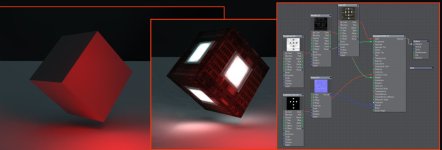Ryan Roye
Animator
I figured this is information people might want, so i'm providing a sample script with scene file. Modifying plugins and surface data must be performed through a combination of:
1) Commands which produce a text file with plugin/surface data (Example: lwsdk.command("Surf_LoadText C:\\mytextfile.txt")
2) Having the script edit (or replace) those text files through parsing
3) Commands which load a text file onto a target plugin entry or surface (Example: lwsdk.command("Surf_SaveText C:\\mytextfile.txt")
The RR_PBR_Surface_Setup.py contained within the zip file will look for files containing key words like "Diffuse" or "Metallic" and automatically set up the nodes on the selected surface. It will save a surface file to the same directory the plugin is run from. Note that this plugin works off of the location of the scene file loaded to find the images and assumes a standard folder structure.
It serves as an example as to how you can avoid having to work in the node editor through scripting. Feel free to pick apart and modify this script to suit your needs.
View attachment 146427




